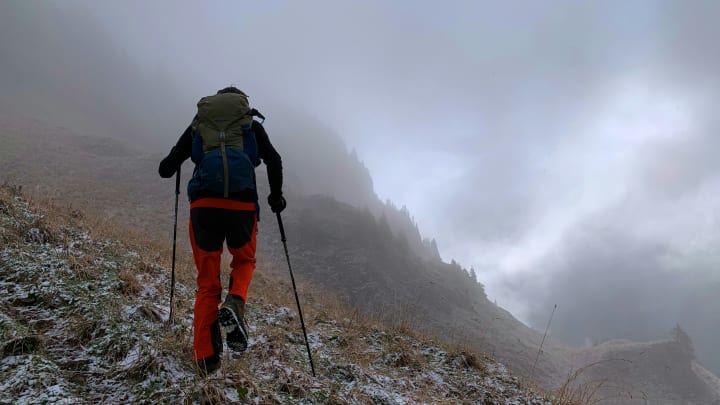4 Ways Trekking Poles Will Enhance Your Hiking Experience

Whether or not hikers should be using trekking poles has been debated in the outdoor community for years. While durable poles can be expensive, the benefits certainly outweigh the drawbacks. Regardless of your age and level of fitness, trekking poles will serve you well on the trail and can make your experience more enjoyable due to these 4 benefits.
1. Joint Support
For individuals who experience knee pain, trekking poles might be your new friend. According to a 2020 Wilderness and Environmental Medicine review, trekking poles can reduce lower extremity joint loading as the poles decrease forces placed on the legs while hiking. Particularly when going downhill, your knees take on a lot of weight, which commonly causes knee pain. When used properly, trekking poles will take on some of that weight.
2. Emergency Preparedness
While we hope to never encounter emergencies in the wilderness, some situations are unavoidable. If you ever need to create a splint, having a pair of trekking poles available will be beneficial. They can be used to create a rigid and reliable splint in the backcountry for a sprain or fracture. Along with medical emergencies, trekking poles can also be used to set up a shelter, such as tents and tarps. Today, there are plenty of shelters on the market that are designed to be used with trekking poles for ultralight travel.
3. Balance and Stability
In 2023, a bioengineering review explained that trail athletes who use poles may experience enhanced trunk muscle activation and mediolateral stability. As a result, movements may become more stable and controlled. Many trails present obstacles for hikers, including boulders, mud, and water crossings. Due to the rough terrain, hiking, at times, can be a balancing act. By using trekking poles, traveling over grueling terrain will become more manageable.
4. Testing Water Depth
Hiking trails often involve some form of water crossing. To the naked eye, the true depth of water can be difficult to judge. By dipping your trekking pole into the water, you can see how deep it is to decide if crossing is feasible. Particularly in cold environments, knowing this information is crucial to staying warm and safe.
Final Notes
Trekking poles come in three main forms: telescoping, folding, and fixed. When the poles are properly adjusted for your height, you are likely to notice an increase in your overall hiking confidence and performance.
